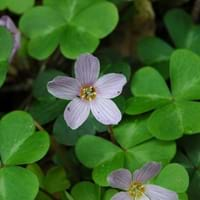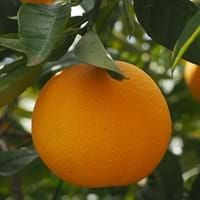Life Span
Perennial
Perennial
Origin
Western United States, Canada
Southeastern Asia
Types
not available
Nules , Nadorcott
Number of Varieties
Not Available
Habitat
Moist woods, Redwood forests
Cold Regions
USDA Hardiness Zone
7-9
8-11
Sunset Zone
4, 5, 6, 7, 8, 9, 14, 15, 16, 17, 18, 19, 20, 21, 22, 23, 24
H1, H2, 8, 9, 12, 13, 14, 15, 16, 17, 18, 19, 20, 21, 22, 23, 24
Habit
Spreading
Oval or Rounded
Flower Color
White, Purple, Pink, Lavender
White, Red, Purple
Flower Color Modifier
Bicolor
Bicolor
Fruit Color
Not Available
Red, Orange
Leaf Color in Spring
Green
Green, Dark Green
Leaf Color in Summer
Green
Green, Dark Green
Leaf Color in Fall
Green
Green, Dark Green
Leaf Color in Winter
Light Green
Light Green
Leaf Shape
Heart-shaped
Acuminate
Plant Season
Spring, Summer, Fall, Winter
Spring, Summer, Fall, Winter
Sunlight
Partial Sun, Partial shade, Full Shade
Full Sun, Partial Sun
Growth Rate
Very Fast
Medium
Type of Soil
Loam
Loam, Sand
The pH of Soil
Acidic, Neutral
Acidic, Neutral
Soil Drainage
Average
Well drained
Bloom Time
Early Spring, Spring, Late Spring, Early Summer, Summer, Late Summer, Early Fall, Fall
Spring, Late Spring
Tolerances
Drought
Drought, Light Frost
Where to Plant?
Container, Ground, Pot
Ground
How to Plant?
Divison, Seedlings
Seedlings
Plant Maintenance
Low
Medium
Watering Requirements
Average Water Needs, Medium
Do not let dry out between waterings, Keep the Soil well drained, Requires consistently moist soil
In Summer
Ample Water
Lots of watering
In Spring
Adequately
Moderate
In Winter
Moderate
Average Water
Soil pH
Acidic, Neutral
Acidic, Neutral
Soil Type
Loam
Loam, Sand
Soil Drainage Capacity
Average
Well drained
Sun Exposure
Partial Sun, Partial shade, Full Shade
Full Sun, Partial Sun
Pruning
Remove damaged leaves, Remove dead branches, Remove dead leaves
Prune in the late winter or spring, Remove damaged leaves, Remove dead branches, Remove dead leaves
Fertilizers
All-Purpose Liquid Fertilizer
All-Purpose Liquid Fertilizer, Equal amount of N,P,K
Pests and Diseases
Red blotch
Black sooty mold, Citrus canker
Plant Tolerance
Drought
Drought, Light Frost
Flower Petal Number
Single
Single
Fragrant Bark/Stem
No
Yes
Foliage Texture
Medium
Medium
Foliage Sheen
Matte
Glossy
Attracts
Not Available
Birds, Butterflies
Allergy
Not Available
Mouth itching, Throat itching
Aesthetic Uses
Ground Cover
Cottage Garden, Farmland
Beauty Benefits
Not Available
Not Available
Environmental Uses
Air purification, Provides ground cover
Air purification
Medicinal Uses
Antirheumatic, Boils, Opthalmic, Rheumatism, Sore Eyes, Swelling
Digestive, Vitamin C
Part of Plant Used
Flowers, Leaves
Fruits
Other Uses
Culinary use, Employed in herbal medicine, Used As Food, Used for fragrance
Added to salads, Culinary use
Used As Indoor Plant
No
No
Used As Outdoor Plant
Yes
Yes
Garden Design
Groundcover, Wildflower
Container, Edible, Feature Plant, Fruit / Fruit Tree, Houseplant, Topiary / Bonsai / Espalier, Tropical
Botanical Name
OXALIS oregana
CITRUS reticulata
Common Name
Redwood Sorrel
Clementine, Mandarin, Tangerine
In Hindi
Redwood Sorrel
clementine
In German
Redwood Sorrel
Clementine
In French
Redwood Sorrel
Citrus clementina
In Spanish
Redwood alazán
Citrus x clementina
In Greek
Redwood Sorrel
clementine
In Portuguese
Redwood Sorrel
clementine
In Polish
Redwood szczaw
clementine
In Latin
Rumex Redwood
clementine
Phylum
Magnoliophyta
Magnoliophyta
Class
Magnoliopsida
Magnoliopsida
Order
Geraniales
Sapindales
Family
Oxalidaceae
Rutaceae
Clade
Angiosperms, Eudicots, Rosids
Not Available
Tribe
Not Available
Not Available
Subfamily
Not Available
Not Available
Number of Species
Not Available
Season and Care of Redwood Sorrel and Clementine
Season and care of Redwood Sorrel and Clementine is important to know. While considering everything about Redwood Sorrel and Clementine Care, growing season is an essential factor. Redwood Sorrel season is Spring, Summer, Fall and Winter and Clementine season is Spring, Summer, Fall and Winter. The type of soil for Redwood Sorrel is Loam and for Clementine is Loam, Sand while the PH of soil for Redwood Sorrel is Acidic, Neutral and for Clementine is Acidic, Neutral.
Redwood Sorrel and Clementine Physical Information
Redwood Sorrel and Clementine physical information is very important for comparison. Redwood Sorrel height is 10.20 cm and width 30.00 cm whereas Clementine height is 460.00 cm and width 300.00 cm. The color specification of Redwood Sorrel and Clementine are as follows:
Redwood Sorrel flower color: White, Purple, Pink and Lavender
Redwood Sorrel leaf color: Green
Clementine flower color: White, Red and Purple
- Clementine leaf color: Green and Dark Green
Care of Redwood Sorrel and Clementine
Care of Redwood Sorrel and Clementine include pruning, fertilizers, watering etc. Redwood Sorrel pruning is done Remove damaged leaves, Remove dead branches and Remove dead leaves and Clementine pruning is done Prune in the late winter or spring, Remove damaged leaves, Remove dead branches and Remove dead leaves. In summer Redwood Sorrel needs Ample Water and in winter, it needs Moderate. Whereas, in summer Clementine needs Lots of watering and in winter, it needs Average Water.





